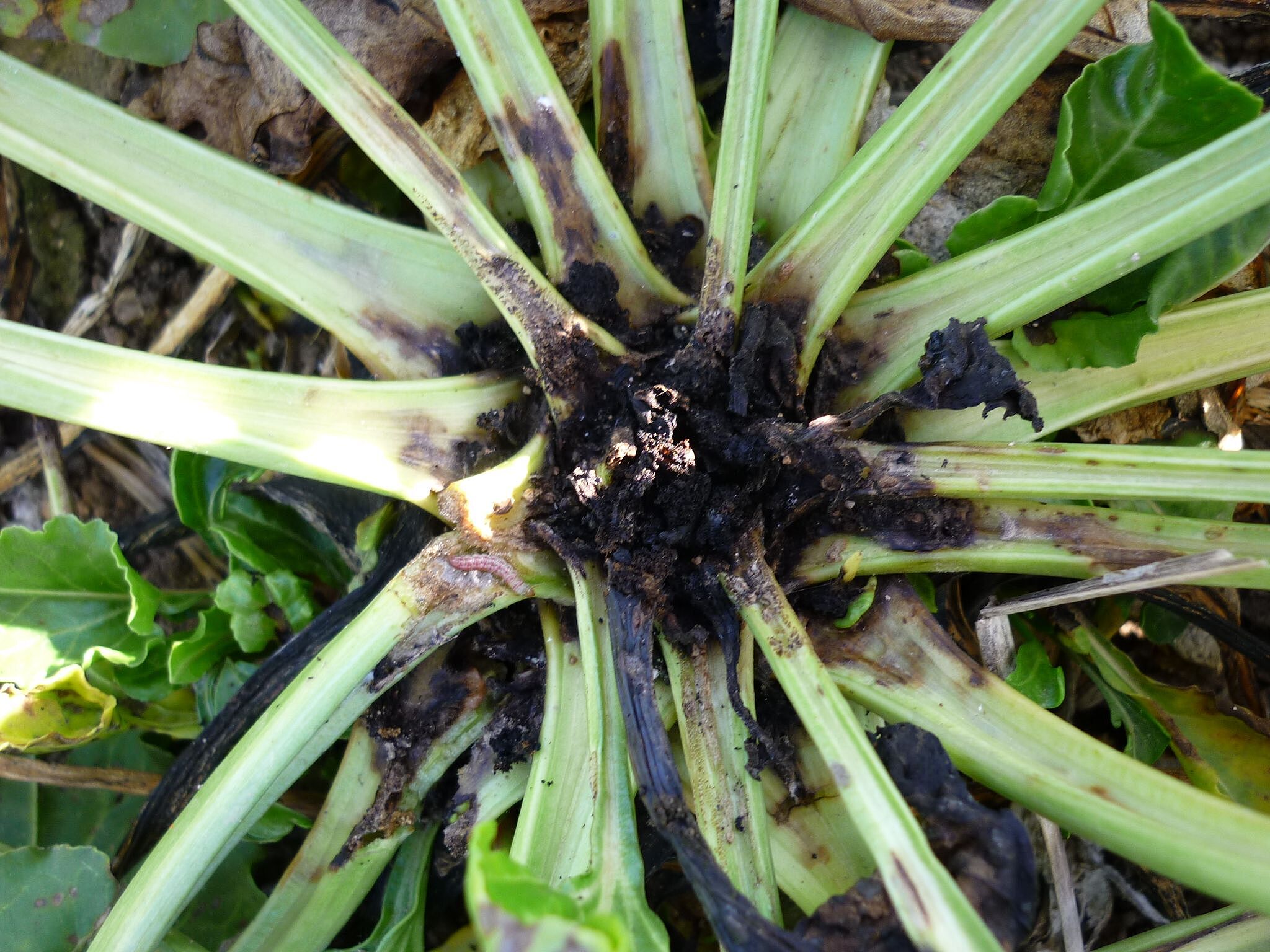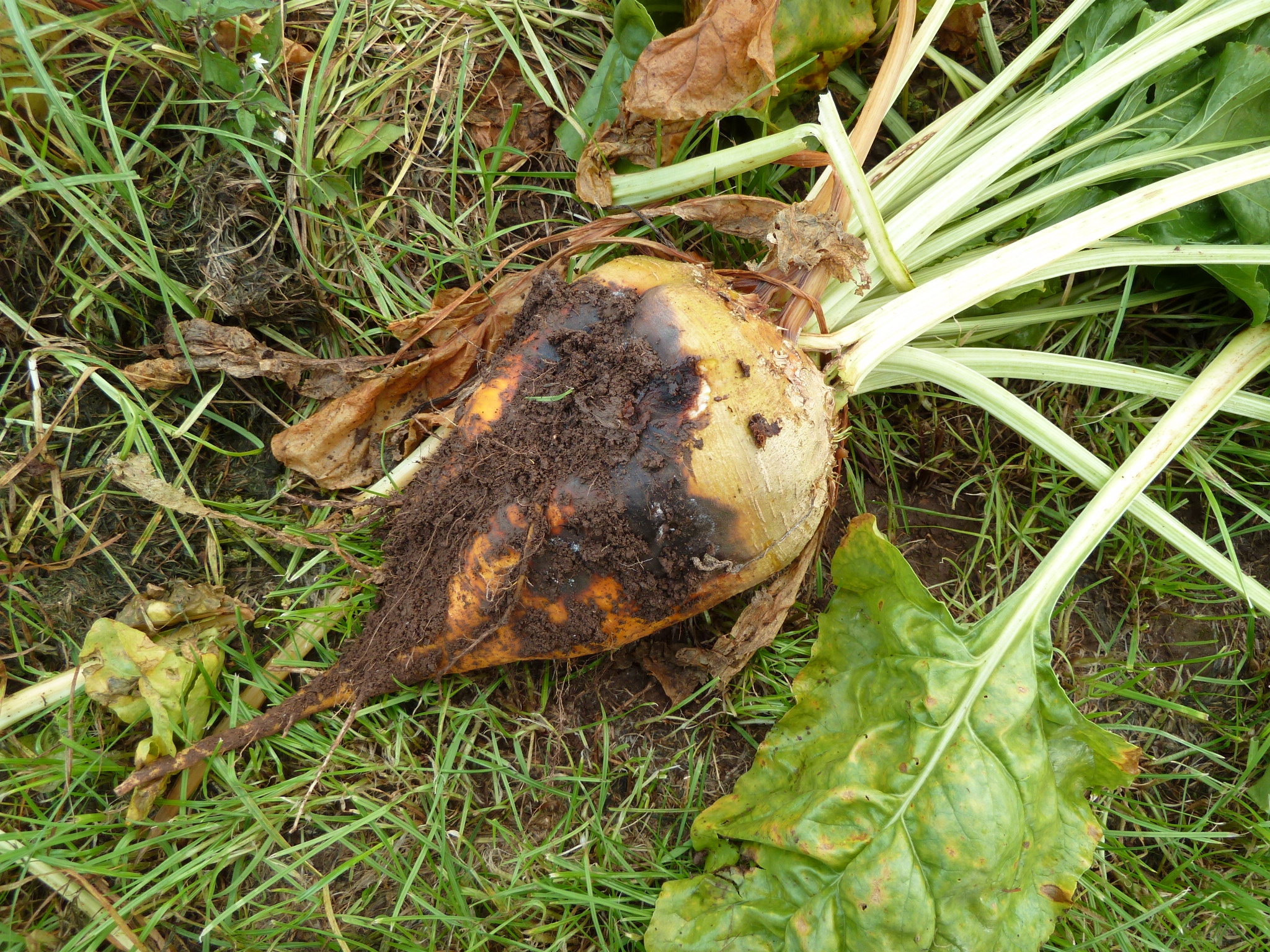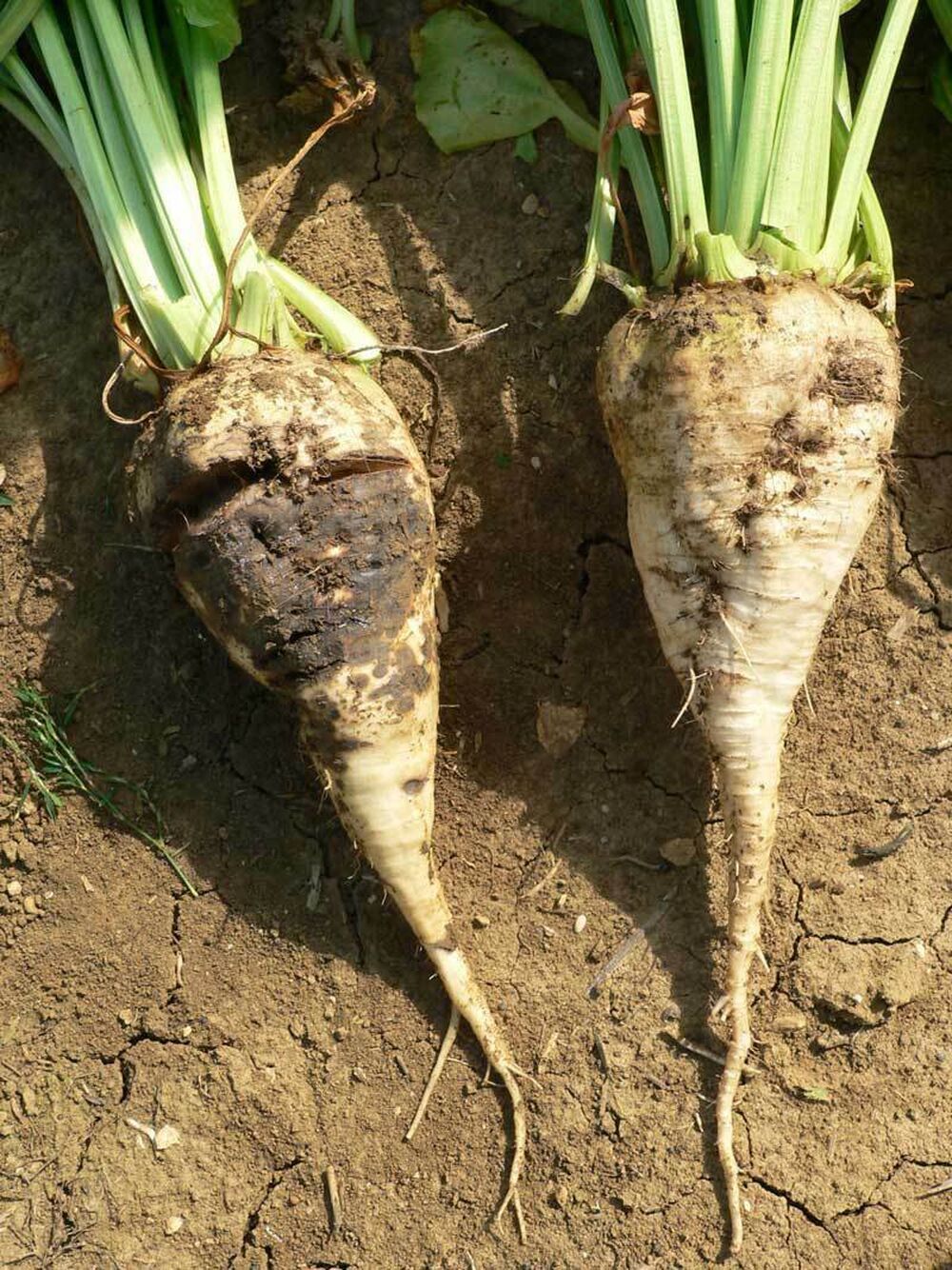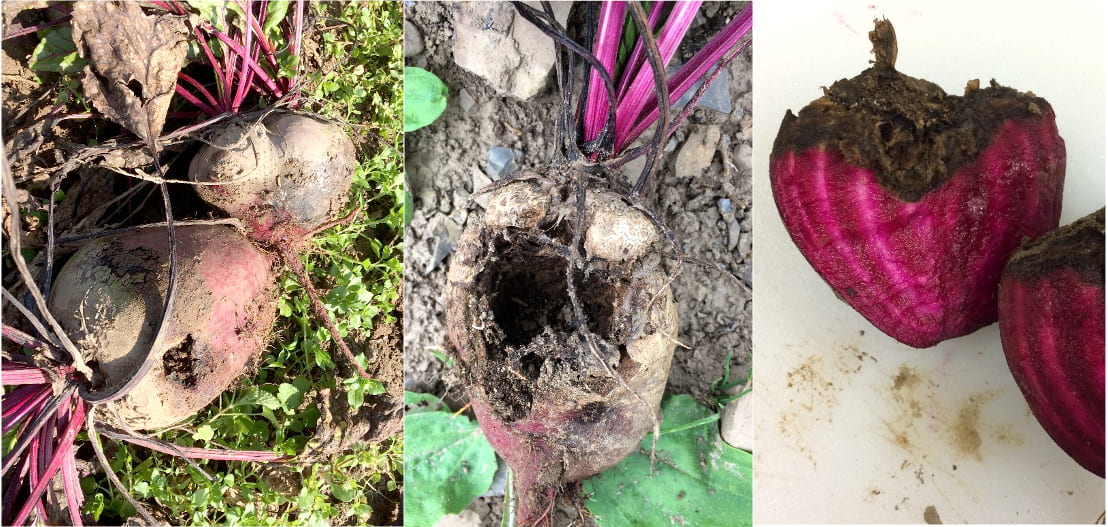
Brown Crown And Root Rot
Rhizoctonia Solani
Pathogen:
Fungus
Type:
Risk:
HIGH
Micosis/Hongos
Remolacha de mesa


WHO CAUSES IT?
Rhizoctonia solani is a soil pathogenic fungus that affects a wide variety of plants, including beet. This fungus is capable of producing sclerotia, which are dark brown to black tough structures that can survive in soil for long periods, even in the absence of a suitable host. When environmental conditions are favorable, especially in the presence of high humidity and moderate to warm temperatures, sclerotia germinate and produce hyphae that invade the roots and crowns of susceptible plants. The hyphae grow through plant tissue, causing necrosis and decomposition of infected tissues. Rhizoctonia solani can also produce spores, although its main method of survival and propagation is through sclerotia.
SYMPTOMS
Brown crown and root rot, caused by Rhizoctonia solani, is a devastating disease of beet. This fungus infects the underground parts of the plant, causing a series of symptoms that affect both the development and yield of the crop. The disease initially manifests itself as brown Taches at the base of the plant, which progressively expand. The roots and crown are affected, showing dark brown decay and tissue collapse. Affected plants usually show stunted growth and may die if the infection is severe. The roots become soft and give off an unpleasant odor as the rot progresses.
- Brown Taches at the base of the plant
- Dark brown decay on roots and crown
- Stunted growth
- Death of severely infected plants
- Soft roots with an unpleasant odor


TEMPERATURE AND HUMIDITY
18°C - 28°C
60% - 80%
TRANSMISSION ROUTES
Sclerotia in soil, contaminated tools, irrigation water, infected planting material, crop residues
Do you want to remove this pest? Choose how you want to treat it.
TREATMENTS
Chemical treatments
• AZOXISTROBIN 25% [SC] P/V
• PIRACLOSTROBIN 6.7% + BOSCALIDE 26.7% ( ) [WG] P/P
Authorized treatments in organic farming
-
Biological control
• TRICHODERMA ASPERELLUM (STRAIN T25) (1X10E8 CFU/G) 0.5% + TRICHODERMA ATROVIRIDE (STRAIN T11) (1X10E8 CFU/G) 0.5% [WG] P/P
• TRICHODERMA ATROVIRIDE (STRAIN I-1237) (1x10E8 cfu/g) 5% [WP] P/P
Recommendations
- Rotate crops with non-susceptible plants to reduce the accumulation of sclerotia in the soil.
- Use resistant beet varieties when available.
- Avoid planting in soils with a history of the disease or in poorly drained fields.
- Implement soil management practices that improve drainage and reduce compaction.
- Apply specific fungicides as a preventive measure, following the dose and frequency recommendations.
- Carry out constant monitoring of the culture to detect the first signs of the disease and act quickly.
- Avoid excess watering and maintain adequate soil ventilation.
- Disinfect agricultural tools and equipment to prevent the spread of the fungus.
Sponsored link
Sponsored link
Sponsored link
Sponsored link
Sponsored link
Sponsored link
Effective against all types of fungi
TREATMENTS
Homemade remedies
There are no home treatments
Natural allies
Chemical treatments
There are no treatments for this disease. Treatments are directed at the insect vectors that transmit it. See insect treatments.
RECOMMENDATIONS
- Check the back of the leaves frequently, especially in dry weather.
- Spray water on the leaves to increase humidity and prevent them from settling.
- Keep plants healthy with good watering and adequate light.
- If you see cobwebs or damage, clean the leaves with a damp cloth or pressurized water.
- Use potassium soap or neem oil every few days until they disappear.
REPELLENT PLANTS
Rosemary, Dill, Coriander
EFFECTIVE PRODUCTS TO ELIMINATE THIS PEST
Sponsored link
Sponsored link
Sponsored link
Sponsored link
Sponsored link
Sponsored link
Effective against all types of fungi
*Recommended treatments are still recommendations according to authority databases and in no way replace the guidelines established according to the legislation of each country.
*Products shown are recommendations and not our own products. As Amazon Associates, we earn revenue from purchases of recommended products.






















